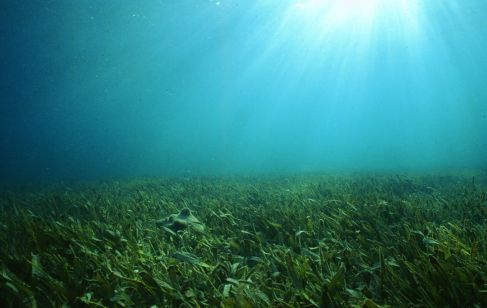With the all the patents on modern medicine held by major pharmaceutical companies it’s nice to know that herbal remedies still have a place in remedying illnesses. Animals commonly utilize herbal remedies and before modern medicine there was a time when for centuries humans commonly used them in everyday life. To this day, shamans (medicine men) are still highly regarded in indigenous tribes because of their knowledge of herbal remedies. Imagine that instead of paying for over the counter or prescription drugs, all you need to do is reach into your garden, walk into a forest, or swim in the ocean to harvest a plant to cure a certain illness. And the best part is pharmaceutical companies can’t put a patent on it! Why? Because it grows in nature. Wonderful.
Well, recently, a group of marine scientists (Rengasamy Ragupathi Raja Kannan, Radjassegarin Arumugam, and Perumal Anantharaman) at Annamalai University in India, published a paper in which they found evidence that certain chemicals found in Indian seagrasses that inhibit the growth of bacteria that cause certain types of urinary tract infections (UTI). Plants typically produce phenols, which are a group of compounds that plants use as defense mechanisms against infection or herbivory. These compounds also have secondary uses and certain ones can be beneficial to humans. In India, seagrasses are used to treat heart conditions and seasickness, as food for humans and livestock, and as fertilizer since it is very nutrient rich. These seagrasses also produce compounds that fight microbial growth and some research suggests some of the compounds it produces are antiviral, anti-inflammatory, antioxidant, and anti-diabetic. However, little research had been done on the possibility of the compounds’ ability to combat UTI bacteria. Therefore, these scientists collected samples of six different species of seagrass, prepared them for analysis, and performed a test on their ability to inhibit the growth of six different strains of bacteria that cause UTI. They also conducted experiments to determine the minimal amount of seagrass extract needed to fight off UTI causing bacteria and analyzed which seagrass compounds inhibit microbial growth. Their results showed that two of the species of seagrasses (H. pinfolia and C. rotundata) significantly inhibited bacterial growth. These two species contained up to 15 different compounds that could be used to fight infections and other human ailments. These scientists wish to continue studies to gain information that will lead to the use of these compounds in pharmaceutical drugs, which may be very beneficial for those with Indian seagrass unavailable to them. However, how much better would it be if we just sold the seagrass in concentrated forms rather than giving large pharmaceutical companies control over the medicine we need?
-Seagrass community in Indian river
Plants today face a number of stressors that can lead to the decline of populations and eventual extinction of species. Global warming is leading to an increase in the frequency and severity of forest fires. Many rainforests are being cleared of vegetation in order to raise livestock, and to make wood products. Ocean temperatures are also rising and nutrient run-off from the use of fertilizers is making it more acidic, which creates an environment that is detrimental to the health of marine plants and coral reefs. All of these communities provide an extreme wealth of herbal remedies, many of which are still undiscovered. With this in mind, it is important that we preserve the multitude of plant species we have on this planet for the potential of finding new medicines and remedies to combat disease. We also should recognize the power of utilizing herbal remedies rather than allowing pharmaceutical companies to control the market. You could grow your own medicine in your backyard. We’ve been using these natural remedies for centuries. Why stop now?
Article can be found at:
http://www.sciencedirect.com/science/article/pii/S0308814612011843
Picture from:
http://mrcevents.blogspot.com/2012/08/august-28-seagrasses-and-their.html
Kannan, R.R.R., Arumugam, R., Anantharam, P. 2012. Chemical composition and antibacterial activity of Indian seagrasses against urinary tract pathogens. Food Chemistry135: 2470-2473.

